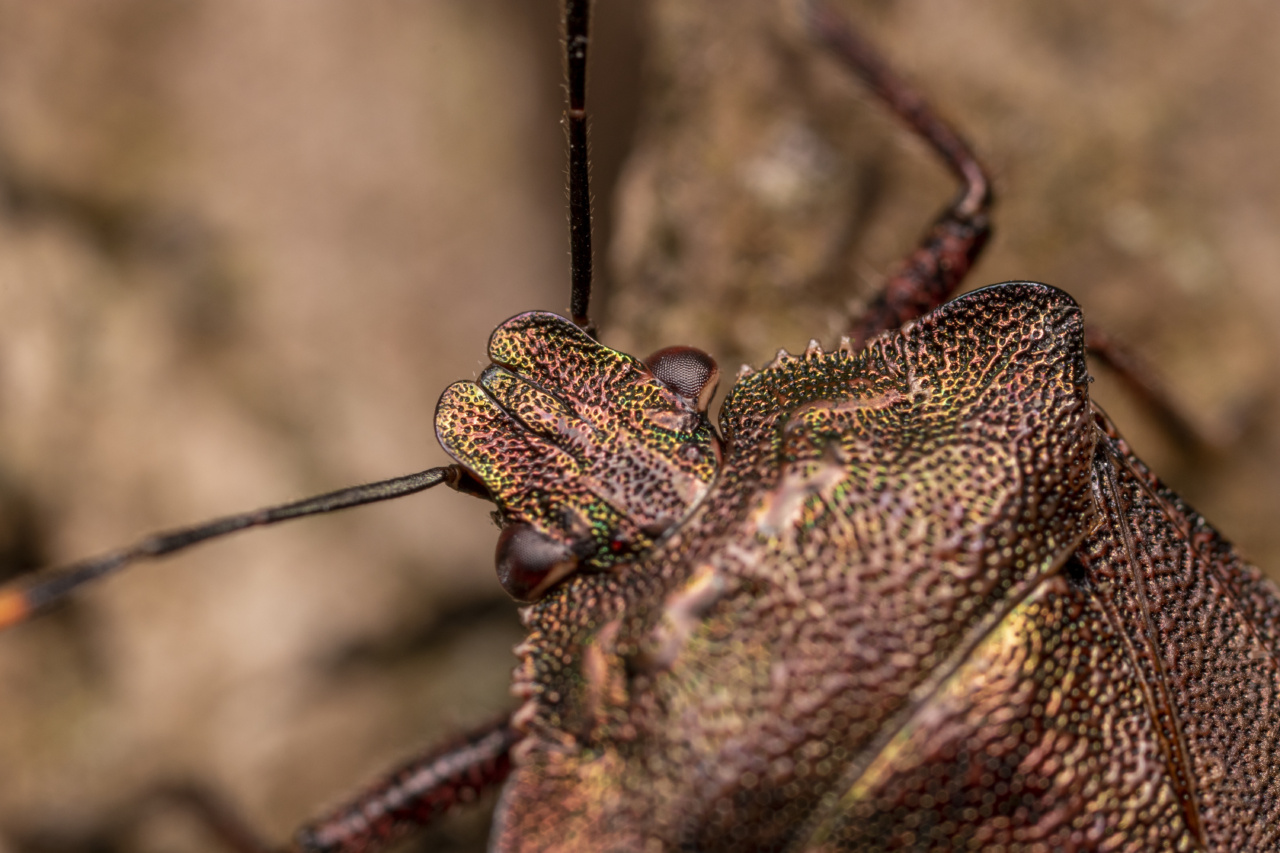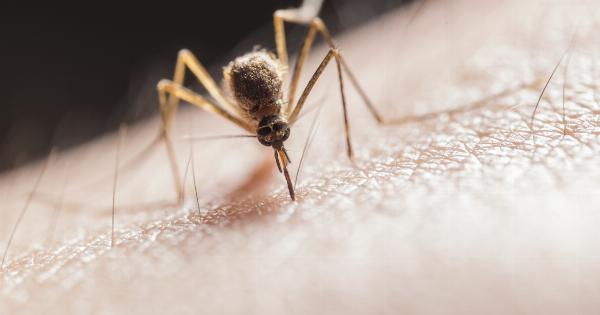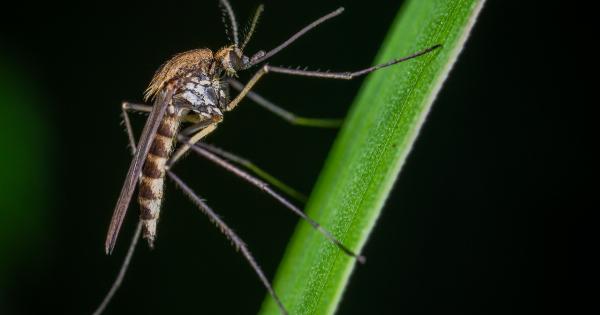Insect bites are a common nuisance that can cause discomfort and irritation for children. As a parent, it’s important to know how to identify different types of insect bites and the best way to treat them.
In this comprehensive guide, pediatrician Marialena Kyriakakou shares her expert advice on managing insect bites and providing relief for your little ones.
1. Identifying Insect Bites
It’s essential to be able to distinguish between different types of insect bites to determine the best course of action. Common insect bites include:.
- Mosquito Bites
- Bee Stings
- Tick Bites
- Flea Bites
- Spider Bites
Each type of bite may present with distinct symptoms and require specific treatment. Marialena Kyriakakou advises parents to closely examine the affected area and seek medical attention if they notice any severe reactions or signs of infection.
2. Relieving Itchiness and Discomfort
One of the primary concerns when dealing with insect bites is the itchiness and discomfort they cause. To provide relief for your child, consider the following tips:.
- Apply an ice pack or a cold compress to reduce swelling and itching.
- Use over-the-counter creams or ointments containing hydrocortisone to alleviate itchiness.
- Give your child an antihistamine medication, following the correct dosage for their age.
- Encourage your child to refrain from scratching the bite to prevent further irritation and potential infection.
Pediatrician Marialena Kyriakakou emphasizes the importance of never applying topical creams containing benzocaine to children, as it may cause adverse reactions and skin allergies.
3. Preventing Insect Bites
Prevention is better than cure, especially when it comes to insect bites. Consider the following preventive measures:.
- Protect your child with appropriate clothing, such as long sleeves and pants.
- Use insect repellents that are specifically designed for children and recommended by Marialena Kyriakakou.
- Avoid outdoor activities during peak mosquito hours, typically dusk and dawn.
- Ensure your child’s sleeping area is protected with screens to keep mosquitoes and other insects at bay.
- Maintain a clean and tidy home to minimize the presence of fleas and other pests.
By following these preventative measures, you can significantly reduce the risk of insect bites for your child.
4. Bee Sting Reactions
Bee stings can be particularly painful and often cause an allergic reaction. Marialena Kyriakakou suggests the following steps if your child is stung by a bee:.
- Remove the stinger immediately by scraping it off gently with a credit card or a fingernail. Avoid using tweezers, as it may squeeze more venom into the skin.
- Wash the affected area with mild soap and water to prevent infection.
- Apply a cold compress to reduce swelling and alleviate pain.
- If your child experiences any severe symptoms, such as difficulty breathing or swelling in the face or mouth, seek medical attention immediately.
It’s also important to note that some children may have a severe allergic reaction known as anaphylaxis. In such cases, it is crucial to have an epinephrine auto-injector available and seek immediate emergency medical care.
5. Tick Bite Precautions
Ticks are common in outdoor environments, especially during warmer months. To minimize the risk of tick bites, Marialena Kyriakakou advises parents to take the following precautions:.
- Apply insect repellents that are effective against ticks and suitable for children.
- Encourage your child to avoid tall grass and woodland areas where ticks are more prevalent.
- After outdoor activities, perform a thorough tick check on your child’s body, paying particular attention to hidden areas such as the scalp, armpits, and groin.
- If you find a tick attached to your child’s skin, use pointed tweezers to grasp it as close to the skin as possible and gently pull it straight out. Avoid twisting or squeezing the tick.
- After removing the tick, clean the area with antiseptic and monitor for any signs of infection.
In case of any unusual symptoms or concerns following a tick bite, it is recommended to consult with a healthcare professional.
6. When to Seek Medical Attention
While many insect bites can be managed at home, there are instances where medical attention is necessary. Marialena Kyriakakou advises parents to seek medical help if:.
- The bite area becomes increasingly red, swollen, or painful.
- There is pus or discharge coming from the bite.
- There are signs of infection, such as warmth, tenderness, or red streaks spreading from the bite.
- There is a high fever or other systemic symptoms.
- Your child develops an unusually severe reaction, such as difficulty breathing, dizziness, or loss of consciousness.
It’s important to trust your instincts as a parent and seek professional medical guidance if you have any concerns about your child’s insect bites.
7. Natural Remedies for Insect Bites
In addition to conventional treatments, some parents may seek natural remedies for insect bites. While individual results may vary, Marialena Kyriakakou suggests trying the following:.
- Applying diluted tea tree oil to the affected area to reduce itching and swelling.
- Using a paste made from baking soda and water to alleviate discomfort.
- Applying a cold tea bag to the bite to soothe irritation.
It’s important to remember that natural remedies should not replace medical advice or treatment, especially in cases where severe reactions occur.
8. Managing Insect Bite Allergies
Some children may develop allergies to specific insect bites, such as mosquitoes or bees. If your child has a known allergy or exhibits signs of an allergic reaction, it’s crucial to:.
- Consult with a pediatric allergist to determine the appropriate course of action.
- Ensure your child carries any prescribed emergency medication, such as an epinephrine auto-injector, at all times.
- Inform caregivers, teachers, and others responsible for your child’s well-being about the allergy and necessary precautions.
By effectively managing insect bite allergies, you can reduce the risk of severe reactions and ensure your child’s safety.
9. Protecting Children with Sensitivity to Insect Bites
Some children may have increased sensitivity or a stronger reaction to insect bites. In such cases, Marialena Kyriakakou recommends taking extra precautions, such as:.
- Keeping windows and doors closed or screened to minimize the entry of insects into your home.
- Using mosquito nets over your child’s bed to provide additional protection while they sleep.
- Opting for clothing treated with insect repellent, following the manufacturer’s instructions.
These measures can help mitigate the risk of insect bites for children with heightened sensitivity.
10. Educating Your Child about Insect Bite Safety
Teaching your child about insect bite safety empowers them to protect themselves and make informed decisions. Consider discussing the following key points with your child:.
- How to identify different types of insect bites and the potential risks associated with each.
- Why it is important to wear appropriate clothing and apply insect repellent when playing outdoors.
- The importance of reporting any insect bites or unusual reactions to a trusted adult.
- How to avoid provoking insects, such as bees and wasps.
By fostering awareness and understanding, you can equip your child with the knowledge they need to stay safe from insect bites.



























